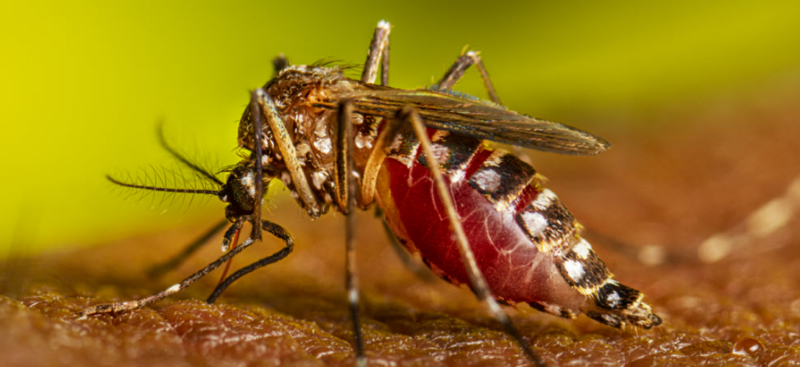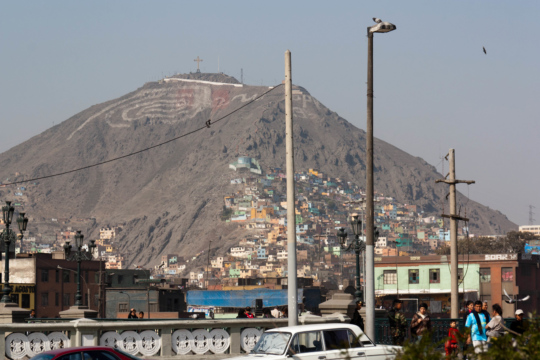
Impact of Lower Commodity Prices on Latin American Growth
With the recent decline in commodity prices, why have some countries have fared better than others?
A Daily Publication of The Dialogue
Peru is suffering its worst-ever recorded outbreak of dengue, which has claimed at least 273 lives in the country and has sickened more than 156,000, according to health authorities. In mid-June, Peru’s health minister, Rosa Gutiérrez, resigned amid criticism over her handling of the outbreak. What are the major factors that have caused the outbreak? How well is Peru currently handling it, and what are the main challenges it faces? To what extent have officials in Peru, which has the world’s highest per capita death rate from Covid-19, learned and employed lessons from the pandemic?
Rolf Erik Hönger, area head for Latin America at Roche Pharma: “The recent dengue outbreak in Peru, as before the pandemic, highlights the inadequacy of the health care systems in many countries. Chronic underinvestment and a lack of proper health planning have left Peru ill-prepared to handle the growing demand for emergencies as well as for the future, considering the changing disease burdens with the aging population. With public health expenditure at a mere 3 percent of GDP, well below the 6 percent that the Pan American Health Organization recommends, Peru has fewer doctors and fewer health professionals per 1,000 inhabitants as compared to its South American peers and OECD countries. The frequent turnover of health ministers, who last an average of just four months, further hampers the development of a strategic and data-driven health care system. To improve the situation, Peru must focus on: 1.) Ensuring stability within the ministry; 2.) Establishing a strategic vision to allocate health expenditures based on evolving health priorities; 3.) Recognizing health as an investment priority, not just an expense; 4.) Increasing financing for the health care sector to achieve the PAHO recommended 6 percent; 5.) Creating a well-designed budget that aligns with strategic priorities; and 6.) Reforming the inflexible budget law. Peru now has the opportunity to learn from past failures and strive for a health care system that truly meets the needs of its population.”
Katherine E. Bliss, senior fellow at the CSIS Global Health Policy Center: “The record-breaking outbreak in Peru is notable within a region that has already reported more than two million dengue cases in the first half of 2023. The four viral strains that cause the flu-like illness are transmitted by the aedes aegypti mosquito, which breeds in freestanding water, thrives in urban environments and transmits the viruses that cause yellow fever, chikungunya and zika, as well. In the mid-20th century, eradication efforts nearly eliminated aedes aegypti from South America; however, the premature termination of those programs, coupled with warmer temperatures and increased flooding, have favored the mosquito population’s resurgence and establishment in new geographic zones. Those conditions may intensify as the current El Niño Southern Oscillation fuels additional rainfall over the Pacific Ocean. President Dina Boluarte has declared states of emergency in the most affected regions, with officials working to prevent infections by eliminating standing water and spraying insecticide. Hospitals in northern Peru, where the outbreak is most acute, have been overwhelmed by the surge of patients seeking treatment. And despite recent progress toward universal health coverage, disease surveillance systems have been weakened, and the Peruvian health work force is poorly distributed, with an estimated two-thirds concentrated in the capital region. The Covid-19 pandemic in Peru provoked considerable public debate about rebuilding the health work force and improving equitable access to primary health care, but the ongoing political polarization makes prioritizing and financing health system strengthening, including preparing for future outbreaks of dengue and other infectious diseases, a challenge.”
Ricardo Izurieta, professor and director for global communicable diseases at the University of South Florida: “Not only in Peru but also in the Americas and globally, the control of dengue has failed because it is a neglected, non-profitable disease. The recent Covid-19 pandemic has provided us with valuable lessons: pandemics should be addressed with integrated, interdisciplinary and systematic strategies that begin with the first level of containment through community education and participation. This approach should address transmission factors, vector control, clinical presentation and management, as well as the monitoring of non-severe cases by community health personnel. By managing non-hemorrhagic cases at the primary community level, we can prevent the movement of human reservoirs to other geographic areas where outbreaks can emerge. At the second level of containment, well-trained specialists in tropical infectious diseases are needed. Unfortunately, the availability of schools for tropical infectious diseases and specialists is continuously diminishing. The governments of endemic countries, including Peru, have failed to ensure access to appropriate medical care, including supportive treatment and fluid management, for dengue patients in order to prevent severe complications. This forms part of the third level of control. The third level also entails providing comprehensive care and management for severe dengue cases. Additionally, post-recovery support should emphasize the importance of ongoing mosquito bite prevention by implementing reverse isolation measures, such as placing the patient under a bed net, as well as encouraging community engagement. Governments should also promote research initiatives like the discovery of antivirals and the development of safe and effective vaccines. Furthermore, the use of technologies such as artificial intelligence, geographic information systems and drones can be explored for effective control.”
 The Latin America Advisor features Q&A from leaders in politics, economics, and finance every business day. It is available to members of the Dialogue’s Corporate Program and others by subscription.
The Latin America Advisor features Q&A from leaders in politics, economics, and finance every business day. It is available to members of the Dialogue’s Corporate Program and others by subscription.
With the recent decline in commodity prices, why have some countries have fared better than others?
Peru’s growing urban middle class is one of the country’s greatest assets, but it also brings political and governance challenges.
In Peru, it is generally known that a better quality education could build citizens, who are better prepared for the democracy and modern and flexible workers, who would help reduce poverty. However, over the last decade- as well during the previous one- many factors have prevented the improvement of the…
 Peru has been experiencing its worst outbreak of dengue on record. The disease is spread by mosquitoes including aedes aegypti, which is pictured. // File Photo: U.S. Centers for Disease Control and Prevention.
Peru has been experiencing its worst outbreak of dengue on record. The disease is spread by mosquitoes including aedes aegypti, which is pictured. // File Photo: U.S. Centers for Disease Control and Prevention.
